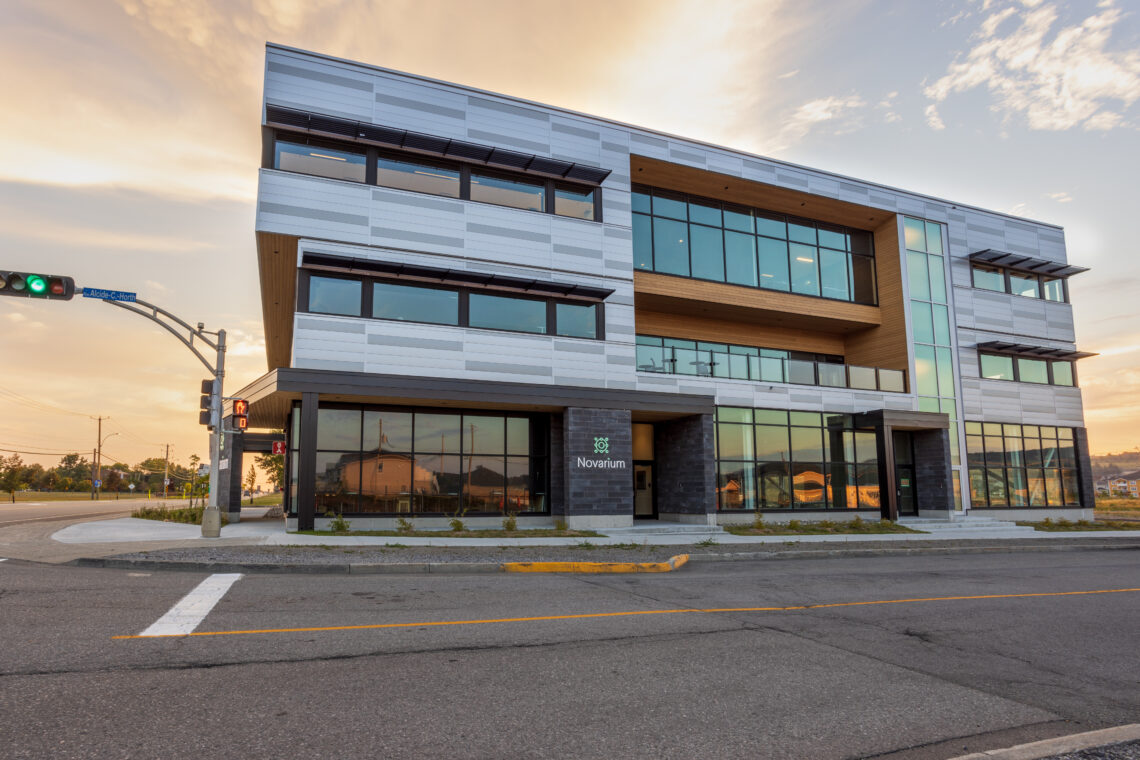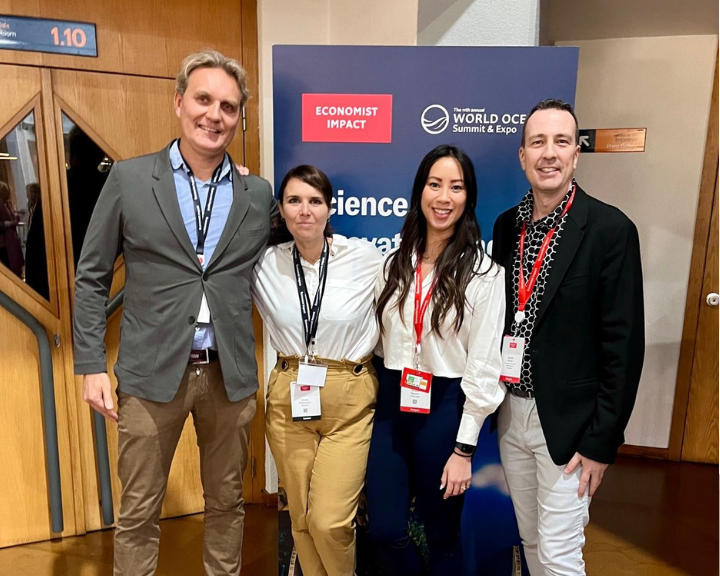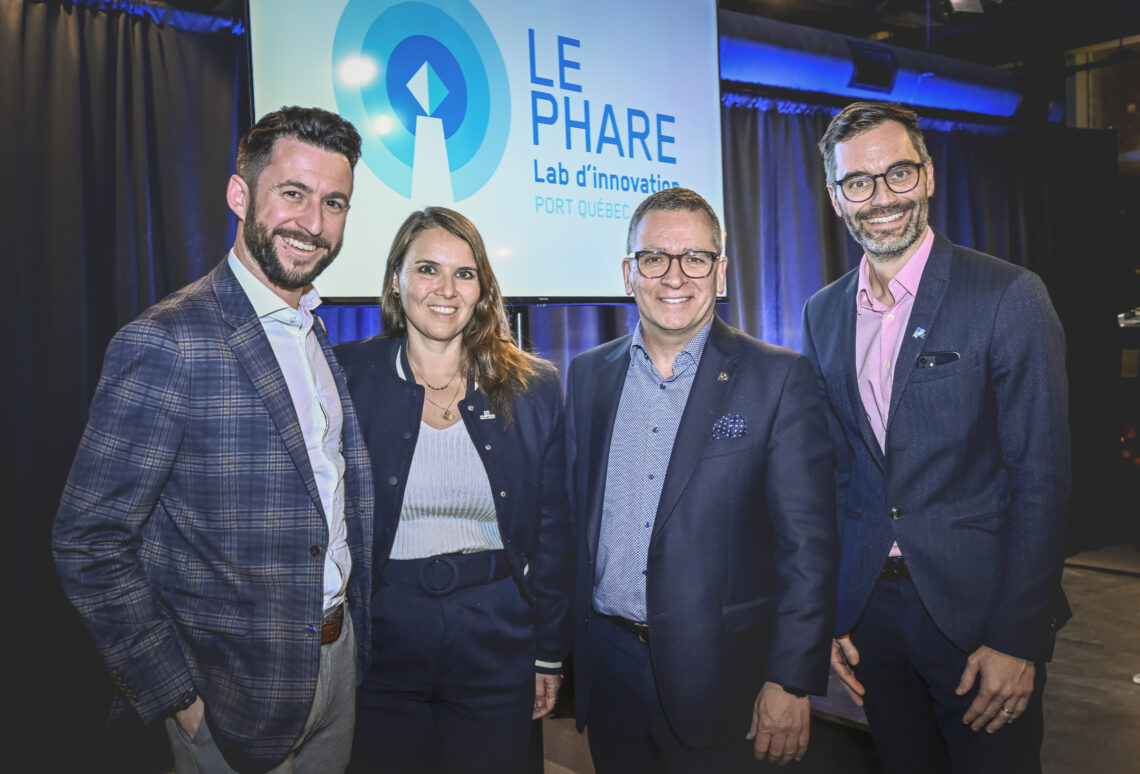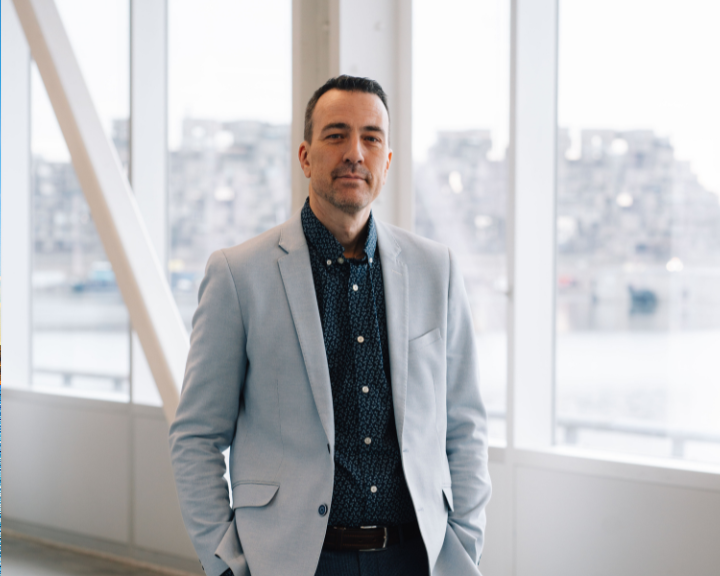Novarium is a blue economy-focused innovation campus that generates synergies between entrepreneurs, research centers, investors, and industry in Quebec. It was founded by Martin Beaulieu, PhD, an entrepreneur and CEO of La Zone Bleue, and is also part of an international blue economy innovation network, acting as a major catalyst for the development of maritime knowledge with more than a hundred scientists involved in fields ranging from oceanography, marine biotech, marine engineering, data management and marine biology.

Interview with Daniel Olivier, VP Partnerships and Corporate Innovation
Can you briefly present your organization to the members of our international network?
Novarium is a blue economy-focused innovation campus that promotes synergies between entrepreneurs, research centers, investors, and industry in Quebec.
Its marine accelerator FLOTS helps startups and industrial partners to develop and bring to market sustainable solutions aimed at tackling the most urgent climate challenges, especially in terms of ocean conservation. The organization has teamed up with world-class partners to offer acceleration programs including MaRS Discovery District and Cycle Momentum.
Novarium also works to stimulate innovation at Quebec businesses involved in the blue tech field, particularly in the maritime and port sector, which is crucial to the blue economy in Quebec and Canada.
What do you think Novarium can bring to the AIVP network?
The vast majority of ports are facing issues of urban coexistence and tensions in the port-city interface. Innovation takes on a social dimension when it aims to improve relations with neighboring communities, whether through education and awareness programs, public relations initiatives, acoustic measures to mitigate noise, programs to manage aquatic environments and habitats, water quality monitoring and management, dust control measures, efforts to cut carbon emissions, or strategies to optimize truck routes.
In addition, we are seeing an acceleration in the adoption of AI to optimize port operations, which directly and indirectly reduces the overall environmental footprint of ports, in line with the universal principle that a more fluid port means a greener port.
For example, Novarium is helping the ports along the Saint-Lawrence to roll out technologies for measuring water quality in real time. This way, ports are better equipped to manage risks by relying on an early-warning system, enabling them to deploy mitigation measures more quickly.
Novarium recently joined forces with Climate Edge to launch a global open innovation platformcalledOcean Edge, that aims to accelerate the deployment of ocean tech through collaborative innovation. What does the project entail?
Currently, most ports are alone in terms of innovation, as there are few or no industry forums in which to build a common sector-wide innovation agenda. By bringing together a select group of international ports all committed to innovating in a collaborative and collective setting, Ocean Edge aims to build a common front for innovation in the maritime industry.
Ocean Edge is an open global innovation platform focused on researching and deploying smart, low-carbon, and regenerative high tech solutions in the blue economy. The program is the only one of its kind, and enables ports and maritime businesses to become blue economy leaders by developing strategic collaborations, pilot projects, and investments with emerging startups in the blue tech field.
Being part of Ocean Edge gives ports and businesses unrivalled access to the world’s leading ocean tech startups, along with peer-led innovation teams and experts. It also lets ports pool their challenges, resources, and especially their knowledge, accelerating the learning and innovation process.
The program is nine months long and starts over every year. It was launched in March 2024, so we are still on the first cohort of five international ports. The very first pilot projects will start in 2025.

In 2023, you made a call for proposal with the Canal innovation challenge in water measurement technologies, in partnership with the three main Saint Lawrence ports (Quebec, Montreal, and Trois-Rivières). What was the response and how did you support the winning proposal?
The CANAL open innovation program is celebrating the successful partnership between the port authorities of Montreal, Trois-Rivières, and Québec, sharing a common vision of sustainable maritime innovation. This inspiring project highlights the importance of the innovation ecosystem to support the ports’ ambitions.
The three port authorities started with a common challenge: how to measure the quality of their waters in real time, straight from the rainwater collection system, so that steps can be taken immediately to remedy the situation or accelerate the remediation process? Which technological solutions are there for harvesting reliable data on crucial parameters like temperature, salinity, turbidity, and mineral and chlorine levels?
Since there were no off-the-shelf solutions available specifically for ports to tackle this issue in the current market, the three ports decided to adopt an open innovation approach. Launched in summer 2023, the international innovation challenge mobilized startups capable of providing a brand new solution, a first for Quebec.
The rigorous recruitment process looked at 1,000 startups worldwide and proved to be the engine that drove the project’s success. The intensive, painstaking search led to the emergence of around thirty candidates who caught the partners’ eye. By the end of the process, six startups had been shortlisted, each with the potential to revolutionize the port innovation landscape. Ultimately, one startup was chosen and is currently testing a solution based on the use of smart sensors to build up a dashboard measuring water quality at strategic points in real time. Not only will the solution allow a fast and efficient rapid alert system to be put in place, but more importantly it will shorten the port authority’s response times if anomalies are detected.
You recently helped the Port of Quebec to create an innovation lab called Le Phare. What does that entail, and what was your role?
“Le Phare” aims to make port infrastructures and resources available to startups, to incorporate innovation into port operations, to support and work closely with academic communities, and to provide an international platform for innovative actions.
To succeed in that task, the Port of Quebec adopted a collaborative approach to become part of the innovation ecosystem, to provide an additional strategic component in partnership with all of the other organizations already involved. It is now a leading partner when it comes to conducting R&D, helping develop technologies, testing new products in a real-world environment, providing a shop window, or sometimes becoming startups’ first customer. It’s a supporting role that makes maximum use of available public resources.
Meanwhile, Novarium provides unique expertise and an international network that are ideal for leading an inclusive innovation vision for all stakeholders on the Saint Lawrence. Programs focusing on the deployment of blue tech like Canal and Ocean Edge can significantly contribute to accelerating innovations based on (1) networking with world-leading startups, (2) creating projects with real-world impacts, (3) sharing the learnings of a community of ports committed to advancing the blue economy, and (4) sharing wins and providing a platform for successful projects.






